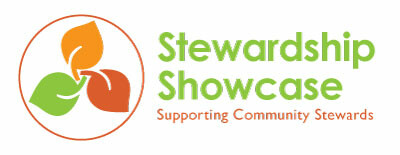Stewardship Showcase: Louis Bull Tribe's Living Classroom

To educate and excite people about nature, Indigenous knowledge and culture, the Louis Bull Tribe is hard at work creating a publicly accessible, outdoor educational experience. Read more about this 2020 Watershed Stewardship Grant recipient and their project to connect people to the land.
Situated south west of Wetaskiwin, the Louis Bull Tribe (LBT), a First Nations band government, is one of the four nations of Maskwacis. In 2020, LBT received funding from the Watershed Stewardship Grant for their Living Classroom project which will facilitate the opening of an educational, outdoor experience.
The outdoor classroom, located within the reserve and accessible to all, will enable people to experience the wandering trails through the transition between prairie uplands, riparian vegetation and wetland water bodies. Throughout the classroom, interactive signage will inform visitors of the importance of these habitats for watershed health, promoting knowledge and stewardship. Additionally, the signage will feature local artisans while incorporating traditional, Indigenous knowledge, providing a heightened level of understanding and connection to the land.
The project has been highly collaborative and LBT has worked closely with Solstice Environmental, the Battle River Watershed Alliance and the First Nations Technical Services Advisory Group who have provided content for the signage and drone photography to mark the trail.
“This project is a really great opportunity for reconciliation in the County of Wetaskiwin,” shares Melanie Daniels, Consultation Coordinator with Louis Bull Tribe. “It’s a good opportunity to open our doors to students from Ponoka, Wetaskiwin and Maskwacis and share how Indigenous knowledge can support western science.”
This experiential classroom inspires a greater appreciation and understanding of the importance of the LBT lands within the Battle River Watershed and engages youth in the field of science. As the first aboriginal woman to receive a biology degree from the University of Alberta, and with numbers still disproportionately low, Melanie is keenly aware of the importance of encouraging Indigenous youth to pursue careers in science, engineering, technology and mathematics (STEM).
Less than 2% of people working in STEM occupations are Indigenous.
“For a very long time, the education system imposed on First Nation’s students has been steered towards social work, Indigenous studies, the arts, etc.,” explains Melanie. “We’ve experienced a transition away from the study of sciences which is intrinsic to our people and culture.”
A core goal of this project is to find new ways to engage First Nation students in science and technology. Through LBT’s work, they hope to inspire and spark interest in STEM careers with Indigenous youth in their community and across Alberta.
But the project and LBT’s efforts reflect something deeper, which is a desire to change the light in which Indigenous communities are viewed.
“Often, First Nations are dealing with pressing social impacts and we sadly, have high mortality rates, domestic violence and other social issues,” says Melanie. “This project is a way to showcase that we are eager to work with others and contribute to the protection of the environment, both within our own reserves and outside of them.”
Even amid COVID-19 setbacks, work on the project has been ongoing and the outdoor classroom is slated to be open by National Indigenous Peoples Day (June 21) next year, with a grand opening and watershed discovery day to be hosted in the summer of 2021.
Stay tuned for the opening ceremony and learn more about LBT and their conservation work.
In addition to the Living Classroom the LBT is also currently spearheading a Lands for Prosperity Project that will transform 4,500 hectares of off-reserve land to regenerative agriculture, effectively protecting and restoring wetlands, enriching soils, and improving watershed ecological services.

